#comicopolitico: un workshop europeo sull’Uomo Qualunque dalle arti alla politica
Appuntamento il 21 e 22 aprile alla Justus Liebig University di Gießen
Si terrà a Giessen, il 21 e 22 aprile il workshop Addressing each and every one: Popularisation/populism through the visual arts: studiosi di vari paesi e discipline si interrogheranno sul rapporto tra le arti e il loro pubblico da un lato, e la politica e la sfera pubblica dall’altro.
Il fulcro della ricerca è una figura chiave nella cultura europea come lo Everyman, lo Jedermann, ovvero l’Uomo Qualunque (o “la gente”, se si preferisce): tema caldo è il trapporto tra la sua bstoria (o la sua genealogia) e i nuovi populismi che infettano le deomocrazie occidentali.
Addressing each and every one: Popularisation/populism through the visual arts
Workshop
April 21 and 22 2016
Justus Liebig University Gießen, Main Building (Ludwigstrasse 23), 3th floor, Seminar-Raum
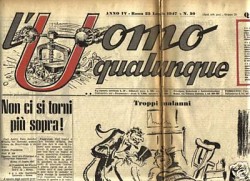 The workshop brings together scholars from art history, film studies, theatre studies, political theory, sociology and philosophy of religion from several European countries. It discusses the ways (iconic figurations, aesthetic styles, rhetoric figures etc.) through which visual culture addresses its audience and gets involved in the constitution of a public sphere. It is in particular interested in how the visual arts – understood as both visual popular culture as well as fine arts – becomes involved in popularisation practices and populist criticism.
The workshop brings together scholars from art history, film studies, theatre studies, political theory, sociology and philosophy of religion from several European countries. It discusses the ways (iconic figurations, aesthetic styles, rhetoric figures etc.) through which visual culture addresses its audience and gets involved in the constitution of a public sphere. It is in particular interested in how the visual arts – understood as both visual popular culture as well as fine arts – becomes involved in popularisation practices and populist criticism.
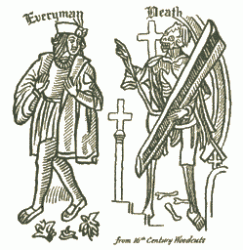
Everyman
The workshop approaches this subject by focusing on the central iconic figure that these practices bring into play: the “everybody” (which stands for “all of us”, but is at the same time also a “nobody”, a “common man”, a “common woman” and sometimes even a “new man” or a “new woman”). It presents spotlights of a genealogy and an iconography of the everybody and discusses political and philosophical theories about how the mediating force of this iconic figuration can be understood and valuated. In doing so, the workshop pays particular attention to the ambivalent role this figure plays, especially in most recent history, in triggering both desire and enthusiasm as well as resentment and hate.
program
April 21th
Writing an iconography of everybody
9:30-10:00 Anna Schober, Introduction
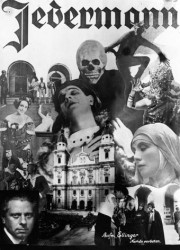
Jedermann-Montage, 1930. Foto Archiv der Salzburger Festspiele _ Ellinger
10:00-11:00 Michael Diers (Hamburg/ Berlin) Jemand, Jedermann und Niemand. Öffentliche Ges(ch)ichtsbilder von Konterfei bis Pixelporträt (chair: Raul Gschrey)
11:00-11:30 coffee break
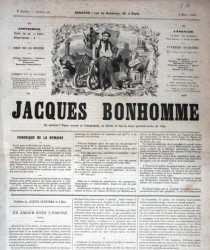
Jacques Bonhomme
11:30-12:30 Inigo Bocken (Nijmegen) Heterology – The perspective of the common man in Michel de Certeau (chair: Jens Kugele)
12:30-14:00 lunch break
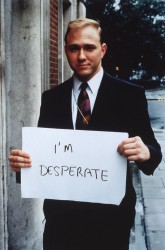
‘I’m desperate’ 1992-3 Gillian Wearing OBE born 1963 Purchased 2000 http://www.tate.org.uk/art/work/P78348
14:00-15:00 Ursula Frohne (Münster) The Secret Life of ‚Everybody’: Paradoxes between Public Image and Confessional Exposure in Gillian Wearing’s Photographs, Videos and Films of Common People (chair: Katja Wehde)
15:00-16:00 Raul Gschrey (Gießen) Everybody here!? Composite Portraiture as Representation of a Common Face (chair: Katja Wehde)
16:00-16:30 coffee break
16:30-17:30 Veronika Zink (Gießen) Enstranging the Everyday. On the Creativity of Ordinariness (chair: Il-Tschung Lim)
17:30-18:30 Richard Dyer (London) Exceptional or Representative? Serial Killing in European Cinema (chair: Il-Tschung Lim)
20:00 Workshop-Dinner
April 22th
Mediating, translating, politicking: Grasping everybody in the public sphere
9:00-10:00 Wim Weymans (Antwerp) Not just everybody? On past and future attempts to visualize the people in democratic societies (chair: Veronika Zink)
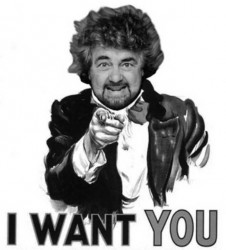
10:00-11:00 Oliviero Ponte di Pino (Milan) A Stand Up Politician for Democracy 2.0: Beppe Grillo and New European Populism (chair: Veronika Zink)
2013, February 25nd. MoVimento 5 Stelle, a political party that had almost no history (and no MPs), became one of the major players in Italian Parliament, with 163 MPs, thanks to eight million voters (almost 25%, as much as one of the other two big players, the center-left Partito Democratico, and more than the alliance led by Silvio Berlusconi).
Leaders of M5S were (and still are) Beppe Grillo, a stand up comedian from Genoa, very popular because of his jokes against corrupt political leaders; and Gianroberto Casaleggio, secretive internet entrepreneur, with the ambition of becoming a web-theorist. An odd pair: an actor that used old fashioned theatrical techniques from Commedia dell’Arte, and a manager using post-modern techniques of viral marketing. Beppe Grillo’s blog went online on January 2005 and in a few months it became on of the 10 most visited websites of the world. The Everybody on stage had met the Everybody on the web.
Before the success of Syriza in Greece, Podemos and Ciudadanos in Spain, Grillo and M5S managed to shake the Italian political system, and is now testing the resilience of democracy in connected societies. (Oliviero Ponte di Pino)
11:00-11:30 coffee break
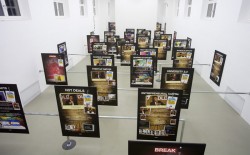
Simon Denny, All You Need Is Data – The DLD 2012 Conference REDUX – See more at: http://moussemagazine.it/denny-kunstverein-munich/#sthash.5JnJ1Uth.dpuf
11:30-12:30 Susanne von Falkenhausen (Berlin) “Everyman” is a spy: NSA´s aesthetics of internal cohesion in Simon Denny´s work “Secret Power” (chair: Mara-Lisa Kinne)
12:30-14:00 lunch break
14:00-15:00 Christian Bracht (Marburg) Die Mensch-Maschine. Kraftwerk Ikonographie 1974 – 1986 (The Man-Machine. Kraftwerk Iconography 1974 – 1986) (chair: Mara-Lisa Kinne)
15:00-16:00 Nina Bandi (Lucerne) A deleuzian perspective on the everybody between visual culture and recent protest movements (chair: Thorn Kray)
16:00-16:30 Anna Schober Wrap-Up
Concept and organisation: PD Dr. Anna Schober DFG-Eigene Stelle “Everybody. Eine transnationale Ikonografie” Institut für Soziologie, Justus Liebig Universität Gießen anna.schober@sowi.uni-giessen.de in cooperation with the Research Area 04 Visual and Material Culture Studies, GCSC
Tag: comico (4)



Scrivi un commento
Devi essere connesso per inviare un commento.